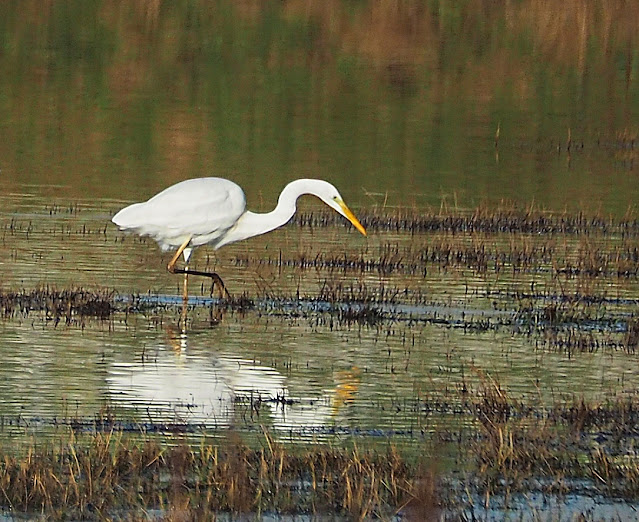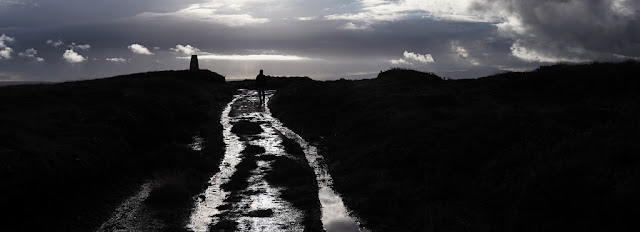Some identification issues this week.
 |
Leebs are uncommon here in Orkney in winter. When I do see them they are usually young birds, looking a bit odd or unwell. But until I found I had a 90 degree on image and could assess the length of the primaries I was struggling a tad with this. I did wonder if I had found a Yellow-legged Gull, a real rarity here; very much a rarity, there are no records. Anyway, I did work this out in the end (some folk think this is a Herring Gull). The oddly shaped bill is because there is a water droplet on the bill tip.
Back in June I photographed a pug, one that doesn't yap or bark, a moth, on Hoy. Here it is.
 |
| Satyr Pug, Eupithecia satyrata (Thanks to RL for the identification.) |
I'd proposed Foxglove Pug. It had then been identified as Edinburgh/Freyer's Pug (Eupithecia intricata). However, as this would have been a county first I needed to get it checked. Re-identified as Satyr Pug, it lacks the dark band across the base of the abdomen that is diagnostic for Freyer's Pug. I had a good look through the images on both British Lepidoptera and on Lepiforum, and although the band can sometimes be hard to see it is usually obvious. Freyer's Pug is a species that is likely here in Orkney, one to look out for.
In recent days I've also been shown images of another mystery pug. The trapper thought it was a good one, so I sent the images off for identification and verification. It has come back as Golden-rod Pug, new for the county, an excellent outcome.
The Great White Egret, or indeed two of them, are still about. Mostly, like today, I see one, but two were here yesterday. If I take the binoculars upstairs I can often see one whilst sitting in bed with a cup of tea.
 |
| This was photographed nearby, in Dounby. |
The tick of the week was a small cranefly, Trichocera major. I must capture another to photograph a bit better, but I had two in the light trap a week ago. I had thought that I had a new fly for Orkney but had again been pipped at the post by BH who had caught and identified this species a few years back.
 |
| Trichocera major, not the best image. |
 |
| Trichocera major, thanks to BH for confirming my ID. |
There were just four moths, none in the trap, all on the wall or on the trap. Three Mottled Umber and an Angleshades.
 |
| Angleshades. |
 |
| Mottled Umber, a dark one and a pale one. |
 |
| Harray Kirk, photos from the garden today. |





















































